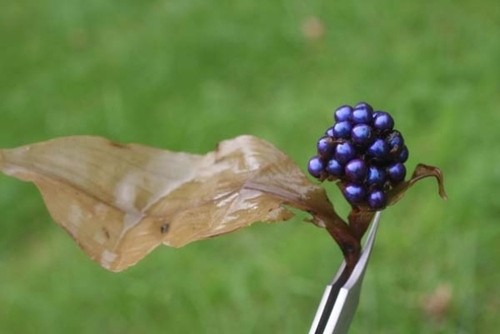CoValence to develop marble berry fruit for skin care use

The Arizona-based supplier is well-known for its custom-made plant-based products, and its latest research, which was initially to observe the coloration of the plant, has led to CoValence announcing its intentions to develop the extract for skin care use.
High levels of polyphenols and antioxidants, found in CoValence’s research, can add protection to the skin, and the ingredients firm says that it will look into topical applications having studied the plant in its natural environment for some time.
Skin care development
“Marble berry beauty combined with excellent topical activity allows a marriage of powerful imagery with efficacy well suited for today's skin care products,” says a statement.
“As such, the company has announced that marble berry extract is now ready to be deployed into new development projects made exclusively at CoValence.”
The marble berry plant that uses a chiral sub-structure to produce color, and this was of immediate interest, to CoValence.
The company was observing the marble berry plant in nature and in the lab, without experimentation, to understand exactly how this plant was producing its color; although this led to the team questioning if a plant is capable of producing color using a chiral structure that does not degrade over time, is there more to be learned?
To further study the property, CoValence visited the Tanzanian bush to get samples, before shipping it to the States, to be extracted and studied.
It was then that the research team found that the marble berry plant not only displays good coloration but also contains respectable levels of polyphenols and exhibits exceptional antioxidant activity at very low use levels; deeming it suitable for topical development.
Color
The initial study was of the pigment properties of the marble berry fruit and how it reflects color using a similar method to that of a peacock's feather or a butterfly's wing.
Upon further observation, the light reflected is circularly polarized to the left or the right, which is the characteristic of a chiral structure. CoValence notes that the structure appears to be quite robust as the color of the fruit remains exceptionally brilliant for years after they're picked.












